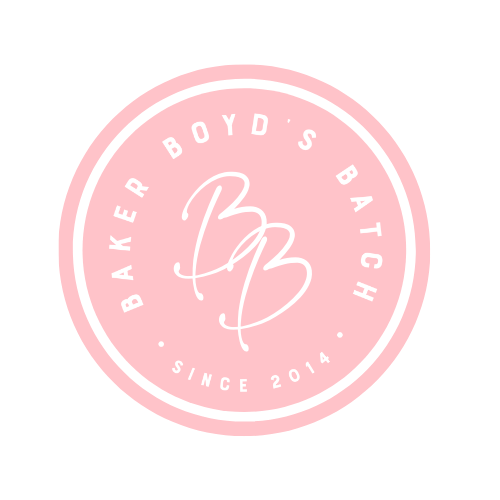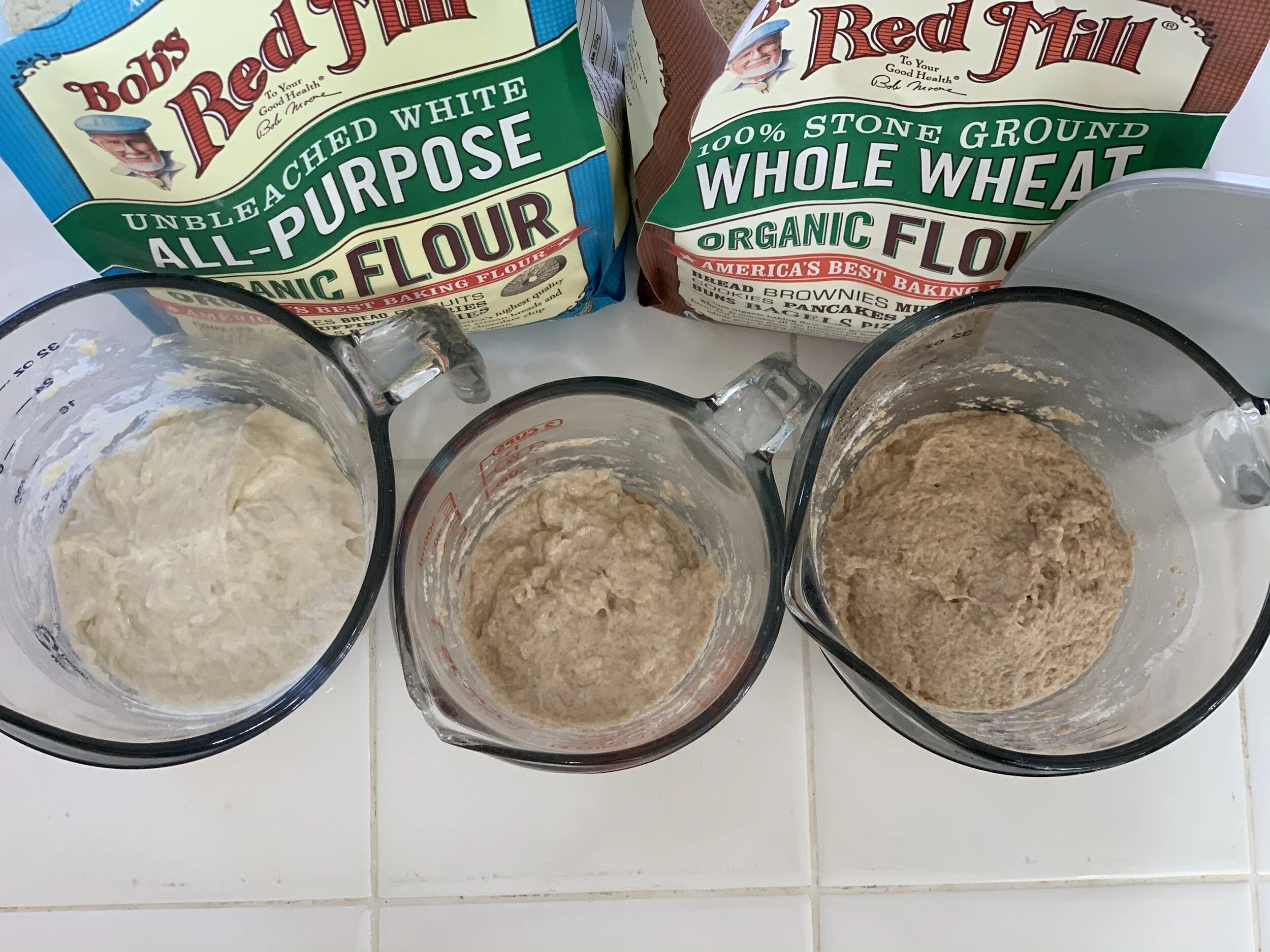Day 1: Choose which starter you will make based on the flour that you have. Remember, you need ORGANIC and STONE-GROUND flour.*
Ingredients:
A: WHITE STARTER (100g All-purpose or bread flour, 100g warm** water)
B: 50/50 (50g All-purpose, 50g Whole wheat Flour, 100g warm** water)***
C: WHOLE WHEAT (100g whole wheat flour, 100g warm** water)
Directions:
1- decide which flour you will use- white flour (all-purpose or bread), 50/50 mixed flours or whole wheat. (NOTE: starters can easily be changed from one kind to another later, so don’t over think this. Just use what you have.)
2- add 100g of your chosen flour to a glass container (4 cup measuring cup, bowl, jar, etc.)
3- add 100g 85° F water to glass container.
4- mix well with a spoon or spatula, cover lightly with parchment paper or plastic wrap. (I use shower caps, which work so well! Make sure the container is not sealed closed. It needs to be able to breathe a little without drying out.)
5- place container in a warm room that does not store food. My starters will live in our dining room for this experiment, but a bedroom or family room would work well too.
6- leave container out and untouched for 24 hours.
SCIENCE: We are letting the microorganisms that exist in the flour, come back to life with moisture, warmth and time. How very appropriate given that Halloween is just around the corner! You could really surprise someone with the truth that you will have actually brought something back to life in time for Halloween! 🎃🤪😂 See you tomorrow!!
*NOTE: Bob’s Red Mill and King Arthur are stone-ground manufacturers that are usually available in most grocery stores. I buy mine from Whole Foods
**NOTE: optimal temperature for making bread is 85°F. Don’t have a thermometer? No problem. Just feel with your finger. It should be pretty hot, but not have any sting when you first touch it. 85°F feels like hot water, but with no sting when initially placing your finger in the water. If it is too hot, it may kill the microorganisms. If it is too cold, it will not stimulate growth.
***NOTE: My “B” experiment will include a 50/50 mix of white and wheat flour AND will be a smaller quantity of ingredients in a smaller container. If you choose the 50/50 option, follow my instructions above using 100g of flour and 100g water. My theory on this lower quantity is that it will grow as many microorganisms as the larger quantities in the bigger containers, just in a smaller setting. But I have not tested this yet, so use 100g.
My starters will live lightly covered with shower caps in my dining room! Where will yours live?



